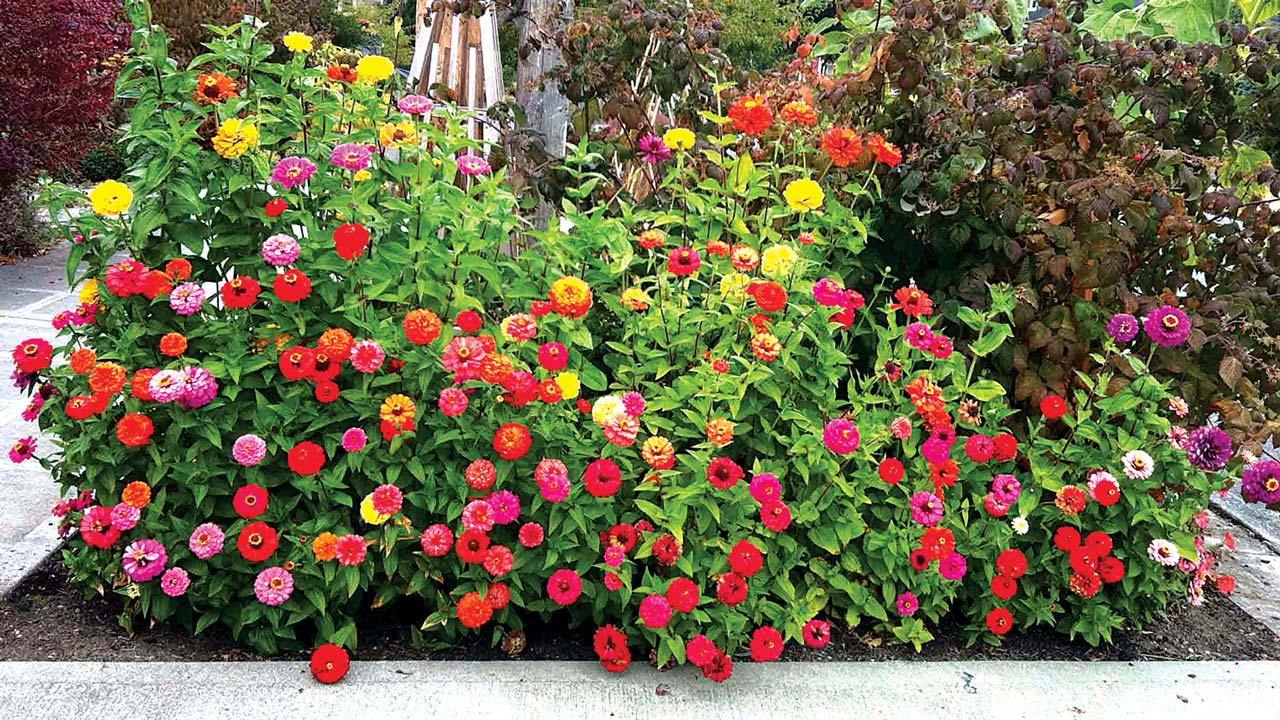A flower garden
Starting a flower garden is both fun and rewarding. As a beginner, just follow these guidelines and you will be off to a great start.
STEP 1- KNOW YOUR GARDEN
Know your site: The first step in creating the perfect flower garden is to familiarize yourself with the area you want to plant. Really know your site.Listen to mother nature to learn your land’s traits, such as light, moisture conditions, drainage and general topography.Know your soil: An important tip to ensure a successful flower garden is to do a soil test. To collect soli samples, dig a hole 1 foot deep, gather a few tablespoons, then repeat throughout the garden until a quart-size jar is full. You can send the sample to a testing lab in the ministry of
Agriculture extension service or use a home DIY Soil testing kit. Use the result to amend your soil before planting.Know your flowers: Learn what plants grow well in your soil. From there, you can figure out what to do design-wise. One recommends taking notes of what seems to be thriving in the neighborhood. Also visit nearby natural areas with similar conditions in the wild to see flowers that you like.
STEP 2: CREATE YOUR COLOUR PALETTE
Create unity: When choosing a colour scheme, pick one that will help unify landscape using variations and different tones of the same colour can make an impact without dominating.
Create excitement: While sticking to a few similar lines can create a feeling of harmony, complementary colours – opposites on the colour wheel – create juxtapositions. For example, the combination of blue and yellow is fresh and lively. In a sunny spot, warm tones like yellows, oranges and reds make the most of the light, especially during the ‘golden hours’, when the sun rises or sets. However, on their own, hot colours can appear flat. Blues compliment yellows creating harmony and vibrancy. Occasionally, splashes of hot orange and red add a little thrill of tropical excitement.
Create peaceful areas: It is prudent to practice restraint, as too much variety can feel tiring. You can’t have everything screaming loud at you in the garden. Separate areas with intense dramatic colours with neutrals. Above all, use colours you personally enjoy in your garden.
STEP 3 – DESIGN LIKE A PROFESSIONAL
Design with shapes: When designing a flower garden, shape is a good place to start. Perennials have several basic shapes: spires, plumes, daisies, buttons, globes, umbels and screens. Try putting different shapes together and see if they spark of each other. Some combinations will be vibrant and dynamic, while others may clash. Planting similar flower shapes together can reinforce an idea.
Design with Repetition: The repetition of key shapes or colours provides a sense of calm and visual unity. Ideally, plants you repeat should have a long season, not look untidy after flowering and flourish in the garden’s conditions. Strategic repetition of flowers offers continuity when moving from one area of the garden to another.
Design in Layers
: When planting, try to pull one layer subtly into another – and vice versa – to create a natural look, rather than simply arrange the layers like a staircase. You can lose plants in the back of the border, so it is important to make sure straight lines remain to see flowers at the rear of a border.
Design In Combinations: Think in terms of plant combinations rather than individual species. Mixing heights, sizes and textures keeps the garden engaging in all seasons. Relaxed plantings will provide colour, movement and a meadow-like feel.
Design with Fragrance and Movement: What you might enjoy most in a garden is the fragrance and movement, and these elements of a garden are not included in the design often enough. Take advantage of natural breeze patterns to allow the scents of flowers to waft towards your home or patio areas.
FLOWER GARDEN TIPS
For a more productive garden and to encourage longer stems (better for cut flowers and floral design), it is better to plant flowers close together. This will reduce weeds and increase the number of flowers you produce.If you are growing flowers for cutting, don’t forget to grow foliage and filler plants for floral arrangements.
If you want your flowers to spill over in a natural way, but don’t want them within reach of the mower’s blades, instill rectangles of flagstone around the flowerbeds. Also keep paths between flowerbeds wide, so flowers won’t be trampled underfoot when walking through the garden.Choose smaller cultivars to reduce pruning work and planting shrubs at the centre of your flowerbeds to provide year round structure and height.With the seemingly endless design options, these tips will guide you in making the best choices when starting a flower garden, allowing you to sit back on a nice afternoon and enjoy the fruits of your labour. Enjoy!












0 Comments
We will review and take appropriate action.